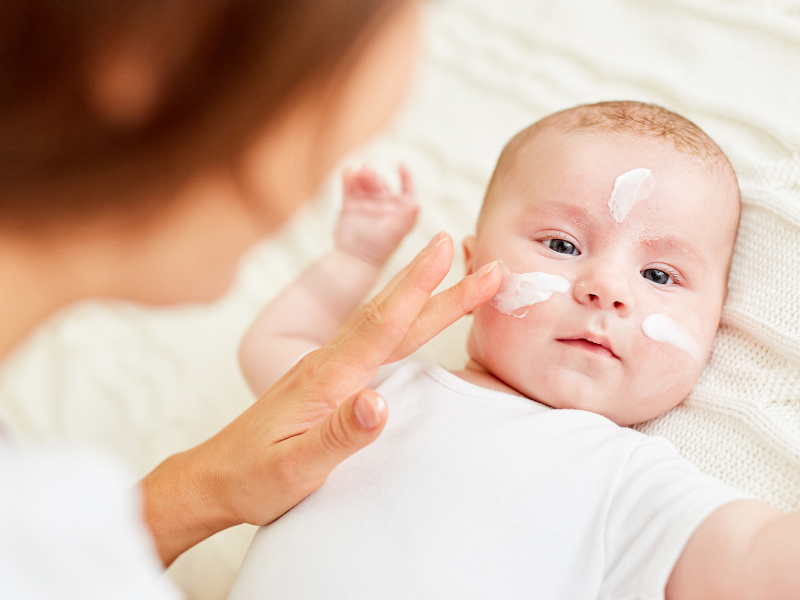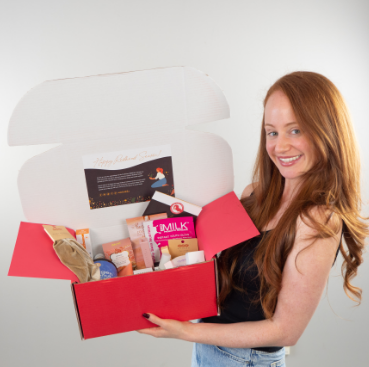Main Image: © Robert Kneschke via Canva.com
Did your little redhead one get a sunburn recently? Sunburns are not fun for anyone, but they can be especially rough on babies and toddlers. For adults, we usually take a cold shower, throw on some aloe, and go about our day. But, if your child has a sunburn, they may be uncomfortable or may be in some amount of pain.
Of course, it’s best to wear sunscreen, stay in the shade, and try to avoid sunburn (if at all possible). But, things happen and kids get sunburns. Here are some tips on how to soothe your little one:
1. Apply a cold compress
Babies and toddlers aren’t quite equipped for a cold shower like adults are, but you can still cool down the skin by applying a cold compress to the sunburnt areas. If you think your kid will stand for it, you can try to give them a cool, but not too cold, bath if the sunburn is affecting a large portion of their body.
To apply a cold compress for your child’s sunburn, follow these steps:
1. Start by dampening a clean, soft cloth with cold water. You can also use a clean towel or an ice pack wrapped in a thin cloth to avoid direct contact with the skin.
2. Gently press the cold compress onto the sunburned areas. Avoid rubbing, as this could cause more irritation.
3. Hold the compress in place for 15-20 minutes, and then remove it for a short break.
4. Continue alternating between applying the cold compress and taking short breaks. This can help soothe the skin and reduce inflammation.
5. Make sure the compress is not too cold, as extreme cold can damage the skin. If your child feels uncomfortable, stop using the compress and give their skin a rest.
6. After using the cold compress, you can consider applying a moisturizing, aloe vera-based lotion to further help with healing and soothing.
Remember that if your child’s sunburn is severe, covers a large area, or shows signs of blistering, it’s important to consult a healthcare professional for proper guidance and treatment.
2. Use acetaminophen
Using a mild pain reliever (think children’s Tylenol) can help to reduce some of the discomfort your child is feeling. Be sure to consult your doctor, use proper dosages, and use sparingly. Always consult with your doctor before introducing this into your child’s routine.
3. Dress them accordingly
It can be very uncomfortable to have your clothing rubbing against a sunburn. Dress your child in soft, loose clothes to prevent any added irritation. They may also be warm due to the sunburn, so use lightweight pieces when dressing them.
To dress your child accordingly after a sunburn and prevent irritation, follow these steps:
1. Choose Soft, Loose Clothing: Opt for soft, loose-fitting clothing made from natural materials like cotton. This helps reduce friction and irritation on the sunburned skin.
2. Cover Sunburned Areas: Dress your child in clothing that covers the sunburned areas. Long sleeves, pants, and wide-brimmed hats can provide good coverage.
3. Avoid Tight Clothing: Steer clear of tight clothing that can rub against the sensitive skin and cause discomfort.
4. Skip Rough Fabrics: Opt for fabrics that are gentle on the skin, avoiding rough or scratchy materials.
5. Use Soft Layers: If possible, dress your child in multiple soft layers to create a barrier between the sunburn and any potential sources of irritation.
6. Protect from the Sun: Ensure that any clothing your child wears provides protection from the sun’s rays. Look for clothing with built-in UV protection or use clothing with a tighter weave for better sunblock.
7. Apply Moisturizer: Before dressing your child, apply a soothing, moisturizing lotion that’s designed for sunburned skin. This can help keep their skin hydrated and reduce discomfort.
8. Be Gentle: When helping your child put on or take off clothing, be gentle to avoid causing further irritation to the sunburned skin.
9. Monitor Healing: Keep a close eye on how the sunburned areas are healing. If you notice any signs of infection, increased pain, or worsening redness, seek medical advice.
Remember that each sunburn is different, and your child’s comfort is a priority. If your child is experiencing severe pain, blistering, or other concerning symptoms, consulting a healthcare professional is recommended.
4. Apply moisturizer or aloe
Help soothe the skin by applying a moisturizing lotion or aloe gel to the affected skin. You can cool your products down in the fridge for some added relief. There are several products containing aloe that can be helpful for soothing and healing sunburned skin in children. Here are a few options to consider:
1. Aloe Vera Gel: Look for a pure aloe vera gel that doesn’t contain additional fragrances or additives. Apply a thin layer to the sunburned areas to provide cooling relief and promote healing.
2. Aloe Vera Lotion: Choose a gentle, fragrance-free aloe vera lotion that is specifically formulated for sensitive or sunburned skin. These lotions can help moisturize and soothe the skin.
3. Aloe Vera Spray: Aloe vera sprays are convenient for applying a thin, even layer of soothing aloe to sunburned areas without the need for direct contact. Make sure the spray is free from irritating ingredients.
4. Aloe-Infused After-Sun Products: Some after-sun lotions and creams are formulated with aloe vera and other soothing ingredients like chamomile or calendula. These can provide comprehensive relief for sunburned skin.
5. Aloe Vera Sunscreen: If your child needs to be in the sun while their skin is healing, consider using a sunscreen that includes aloe vera. This can provide sun protection while also soothing the skin.
6. Aloe Vera Sheets or Pads: Some products are designed as adhesive sheets or pads infused with aloe vera. These can be applied to sunburned areas for ongoing relief.
When selecting a product, make sure to read the ingredient list and choose products that are free from potential irritants like fragrances, dyes, and alcohol. Patch test a small area of skin first to ensure your child doesn’t have any adverse reactions to the product.
It’s important to remember that everyone’s skin reacts differently, so observe your child’s skin for any signs of irritation or discomfort after applying any new product. If their sunburn is severe or not improving, it’s best to consult a healthcare professional for advice.
Rock it like a Redhead!
RELATED POSTS
READ: What Actually Happens When Redhead Skin Gets Sunburnt
READ: 6 Best Natural Ingredients for Redheads Dealing With Sunburn Pain



